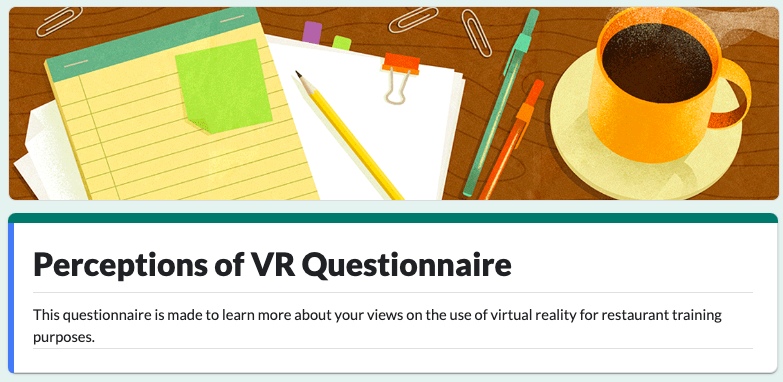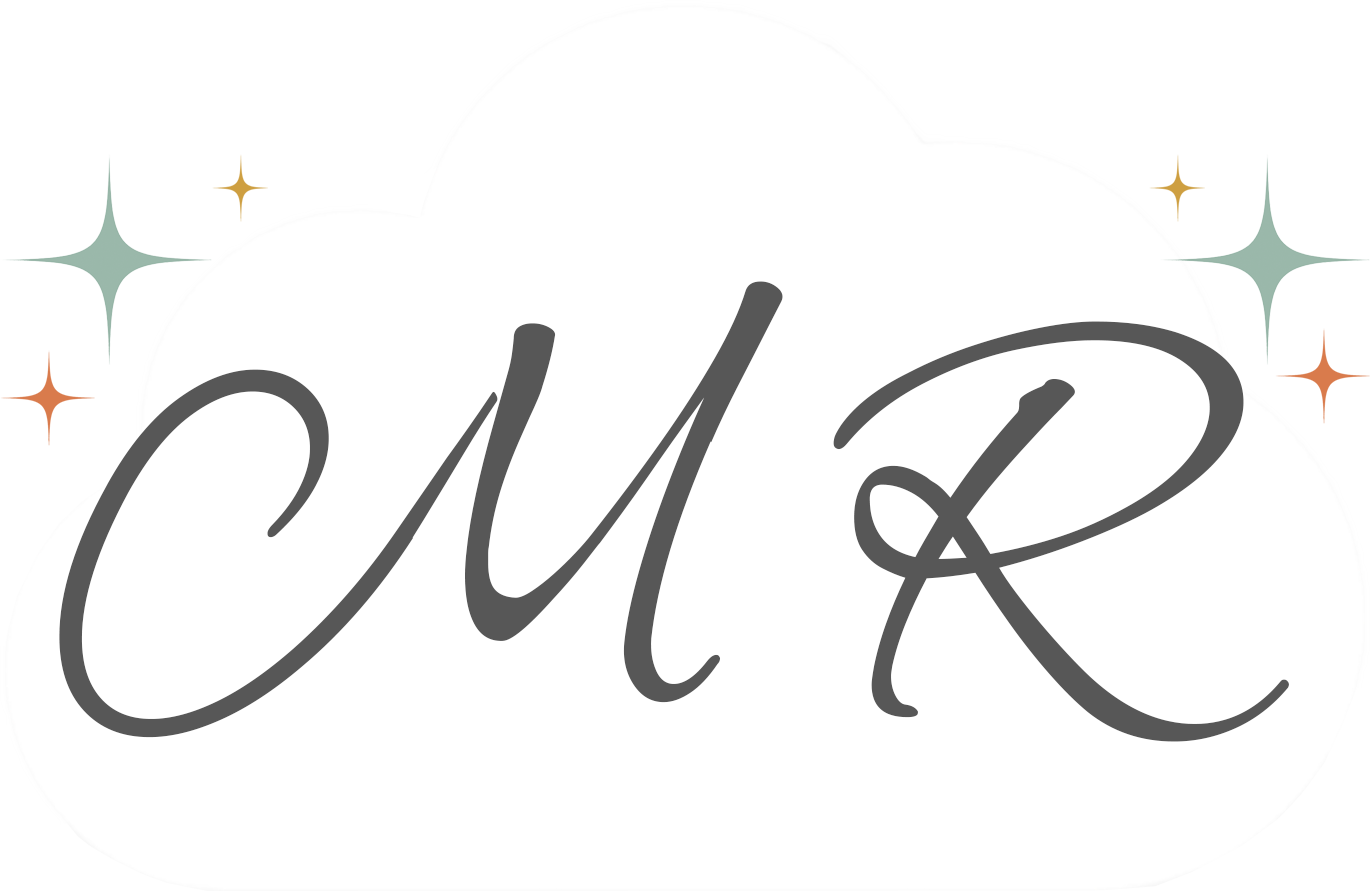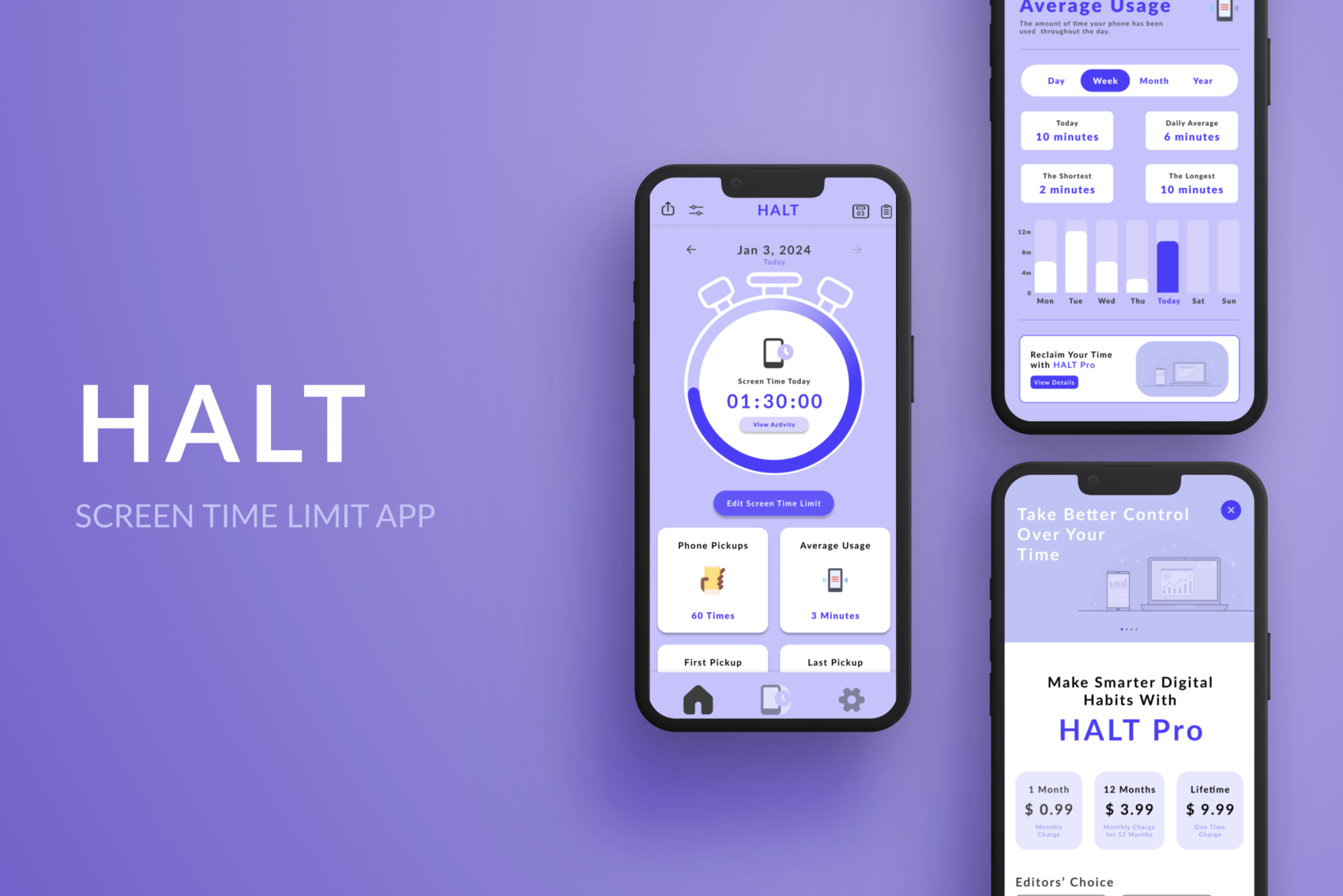VR Qualitative
Research StudY
Restuarant Training
Project Overview
I created this study as my final project for my Philosophy & Virtual Worlds class at Texas State University. Combining the subjects of UX research, phenomenology and virtual reality, I wanted to create a research project on the lived experiences of fast-food workers in a virtual restaurant environment.
My Role
- UX Researcher
- Interviewer
- Group Facilitator
Tools
- Oculus Quest
- Google Forms
- Figma
Timeline
- Overall: 8 Weeks
- Discovery & Research: 6 Weeks
- Design & Testing: 2 Weeks
What are the lived experiences of fast-food workers within a VR restaurant game?
The topic of virtual reality can hold lots of controversy and put ethical values to the test. While there is so much potential that virtual reality holds, from advancements in gaming to educational learning, one emerging innovation that VR provides is immersive job training.
To what extent can VR elevate job training, and how would employees react and be affected by this process if implemented in the future? A question like this requires lots of intensive research. In this qualitative research study, a group of fast-food workers will provide their thoughts and perspectives of how VR could change the way restaurants train their employees in the future.
My Research Process
1
Discovery & Research
2
Questionnaire
3
VR Experience
4
Group Interview
5
Learnings
Discovering Phenomenology
When I was finishing up my degree in digital media at Texas State University, I was required to take one more free elective course outside of my major. No other course caught my attention than one called Philosophy and Virtual Worlds.
In this class, we discussed many philosophical ideologies surrounding VR, discussing questions such as, “What is the distinction between reality and virtual reality?” Of all the philosophical terms that we discussed from our assigned book and from class, I was most intrigued by phenomenology.

What is Phenomenology?
Phenomenology is the investigation of the essence or the nature of material things or things that appear to us.
Phenomenology is the attempt to describe and reflect on what is given to us in experience.
It deals with the determination of nature and structure of human conscious experience that we receive from our senses – what we see, hear, feel, smell and touch.
For instance, I could give a phenomenological reduction about the life experience of what it’s like to drink water, what it’s like to sing in a choir, or how it feels to graduate.
Phenomenology can be used to describe our experiences in virtual reality.
For instance, although I could be standing in my room and feel my VR headset resting on my head, I could be seeing myself as an avatar moving around a virtual world in outer space.
I could describe a phenomenological reduction of how I was walking around the moon, regardless of that experience is “real” or not.
Phenomenology is a term that can also be found and used in the UX research process.
Although some UX researchers may or may not know this term, they are practicing phenomenological practices without even knowing.
When the UX researcher is asking their subject about their experience through their use of a product, that is phenomenology. The way that UX and phenomenology intertwine was also an inspiration that went into me developing this research study.
Research Plan
By asking the research question of “What are the Lived Experiences of Fast-Food Workers in a VR Restaurant Game?”, I wanted to look into the way that fast-food workers would feel in a restaurant setting in VR, and how they believe this experience could work if used as restaurant training in the future.
The reason why I went into the implications of VR in restaurant training is because of my own personal experience as a restaurant trainer along with my curiosity of how VR could one day take over as a training tool in a restaurant setting.
VR training offers what real life job training doesn’t:
repetitive training without the expenses.
*VR can also help the user build confidence in their skills, allowing them to gain experience before even starting the job. Especially if VR training takes place in the form of a game, such as the one that I’ll later have my subjects participate in, this allows users to be focused while wearing the headset, leading to minimal distractions as opposed to distractions they might face in a real-life training session.
After discovering and researching about my topic, I recruited 6 people who’ve worked in the restaurant industry and had them complete my research process in this order:
1) Questionnaire
2) The VR Game Experience
3) Group Interview
After having my test subjects complete each component of my research process, I will then be able to reflect on my learnings and next steps.
Questionnaire
After weeks of researching my topic and planning my research study, I finally recruited 6 participants who were excited to participate in my study.
I planned a day for when all of the participants were able to get together to kickoff the VR research study. I provided snacks and beverages while everyone was arriving. Once each participant had arrived and settled in, I got them started on my questionnaire.

I created my questionnaire through Google Forms, as it was the easiest way to share for everyone to take on their phones.
The reason why I had my participants start on my questionnaire first was to not only learn more about their general background, such as their age and background in the food industry, but to examine their perspectives and beliefs towards virtual reality.
Conducting this questionnaire would help me to learn and understand how their background goes into the phenomena in virtual reality to be experienced in this study.
First, I asked questions about their
experience in the food industry
Quantitative Questions:
Name?
Age?
Qualitative Questions:
What did you like most about working in fast food?
What were your favorite and not-so-favorite tasks as a fast-food worker?
What problems did you have to overcome when you first worked in fast food?
Once everyone had completed the questionnaire, I then had each of the 6 participants go through the VR experience.
Then, I asked questions about their
perspectives on virtual reality
Quantitative Questions:
Have you tried virtual reality before? (If so, how many times?)
If you owned a VR headset, how often would you want to be on it?
Qualitative Questions:
What impact do you think virtual reality will have on society in the future?
What do you think makes people view virtual reality in a positive or negative way?
How can VR be used to help the training process of a fast-food worker?
For what reasons do you believe restaurants will start to incorporate VR training for their employees in the future?
If VR training was applied to fast-food workers today, in what ways would their training experience differ from yours?
VR Experience
Before I go into my observations of the participants through the VR experience, I’d like to first discuss Clash of Chefs, the VR experience I chose for them to go through and my reasoning for choosing this experience for the participants.
Clash of Chefs Game Objective:
In this game app, the user is able to be a chef inside of a restaurant, where they have to make food for the customers. When an order pops up on the ticket, they have to make it exactly the way that the customer wants. They do so in a time limit, and as the game progresses the food recipes and cooking tasks become more complex.
I had each participant play through the first three rounds of the American food mode of Clash of Chefs, where they cooked and dressed the burgers in a certain way for each customer order. For each round, there would be a tutorial on how to cook the burger, put on the condiments, cut the lettuce, tomatoes and onions, and even how to pour the drinks for each order. Once the tutorial was over, the game would then commence for that level. As long as the majority of their customers had a good satisfaction with their cooking performance, they would then move onto the next level.
Overall, the participants seemed to really enjoy playing through this game, and most of them even wanted to play more levels. I also noticed some participants struggling through the game, using one hand and becoming stressed, while other participants were fast and moving around a lot with both hands. Some participants became quiet while they played, while others were talking through their actions or even screaming with excitement. These observations made me interested in other potential learnings I could make in the future about their behaviors with VR.

Here are some of the participants playing Clash of Chefs.
Group Interview
After the VR experience, I conducted a group interview to learn what the participants had thought of this VR game along with its potential if implicated as a restaurant training tool in the future. I prepared an interview script with 6 open-ended questions, focusing on their thoughts on the game, their renewed perspective of VR, and their thoughts on the future of VR.
Once everyone had gone through the VR experience, I had everyone sit around together as I pulled up my interview questions. With their permission, I started my audio recording as we progressed with the group interview. I refined my questions into 6 qualitative questions about their experience and renewed perspectives of VR.
Focus Group Questions
What are your thoughts about this game?
How well does this game convey working in a fast-food restaurant?
What qualities did you find dislikable or difficult in this game?
What qualities did you find likable or enjoyable in this game?
How does the VR restaurant experience compare to your background of working in fast-food?
Would you recommend restaurants to incorporate a VR game to their training process? Why or why not?
Focus Group Observations
While taking notes of the answers that the participants would all come up with, I noticed how they were all respectful of each others opinions and willing to hear opposing ideas from each other. They were all excited to discuss what they felt during the VR experience, and they all had a positive experience with the VR game. The majority of the group was excited about the aspect of training through VR, and had really enjoyed the overall experience of this study.
At some points of the interview, they would go a little off track from the question, but in a way that they would relate VR into their background in the food industry and how that would align with their current struggles.
Learnings
I’ve gotten to learn and practice some skills in this qualitative research study, including organizing a research study, developing interview questions, and facilitating a group through an experience and interview process.
After conducting this study, I also got to practice my skills in Figma by developing a visual presentation of my questionnaire findings. I feel that I’ve grown as a UX researcher by developing qualitative research questions and conducting a group interview.
Next Steps
To continue this project, my next steps would be to conduct other ways that VR could be implicated in restaurant training besides a game experience. For instance, I could bring in other experiences similar to a VR documentary. Something that I would have loved to also do was to interview more restaurant workers if I had more of the time and resources to do so.
I would have also wanted to do more one-on-one interviews instead of a focus group interview, to get a more thorough understanding of what each participant had thought of their VR experience without the influence of what the other participants would answer. Some advice that I would give after completing this study would be to make sure to refine your research goals and align that with the types of questions asked.




